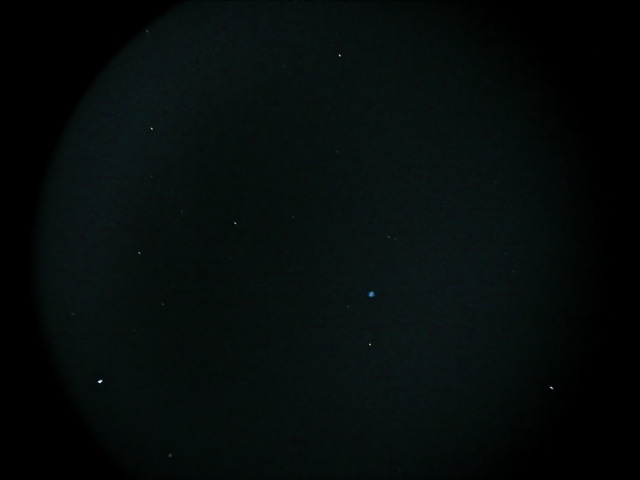Use a small 'Philips' screwdriver to remove your finder scope. Fig.1
Make sure you mark your screws before removing them using any sort of 'marker' that wouldn't be rubbed off by your fingers. You would want the same screws to go into the same hole, and the correct tension, hence the 'marker'. Fig. 2
Also, it makes sense to mark all three screws differently. You can mark all three screws 1, 2, 3. I 'dot' mine accordingly. Fig. 3
Then you can proceed to remove all three screws and 2 screws that secures the quick-release 'slider' to the rear housing. No need to unscrew the screw at the front end of the slider. Fig. 4
Once all the necessary screws are removed and stored safely, slide out the tube and the rear housing apart slowly and carefully not letting the 'inner tube' touch the body of the scope. Use your common sense!
Store and cover the rear cell away safely from arms reach (you do not want it to roll away do you?).
Again carefully not touching anything of the mirror or tube assembly! Fig. 6
Hold the tube with the opening facing 'down' so any dust would just drop away while you use the 'puffer' as I called it. Fig. 7
If your hands are small enough you could use the soft lens brush to brush lightly away on the 'corrector lens'.
Once again be gentle and use very, very light strokes. Make SURE your brush is CLEAN and free of particles!!
'Stand' the tube like this Fig. 8 so dust would not enter the tube as you work away on the other part of the telescope.
Now we come to the mirror. The object is that you don't want scratches on the mirror! So use light strokes for dust particles that seem to 'stick' on the mirror. Fig. 9
You can use the 'puffer' first to blow away the particles. Fig.10 Whichever way you can alternate between them. Use the 'puffer' at an angle to the surface whether its the mirror or the front lens you're cleaning, so dust is removed effectively away from the surface.
A word on using the lens brush, brush on the surface as if you're almost touching it. Remember that you want to remove the particles and not 'pressing' them onto the glass while you swipe away.
Fig.11 At times I would also clean the angled-mirror inside from the lens barrel. The same goes through the rear of the cell where you'd screw the 'T-Adapter' at the back - remembering to hold the rear cell pointing downwards for the dust to fall through.
Give it a soft and gentle sway of left to right motion to let any residue fall away. A gentle 'shake' would also do the job.
NOTE: For an 'un-opened' Nexstar 4SE
NEVER..ever use a vacuum cleaner's hose and suck dirt from the opening of the rear cell!! Fig.12
I've read from a forum that someone did that and guess what? I did it! Foolish me!
By doing so, all the dust or whatever that's at the back of every corner of the rear cell is going to get sucked into the main tube and get stuck to the back of the 'corrector lens', then you're a goner!! The suction power will multiply through the secondary tube inside the telescope's main tube. My heart dropped when I saw my corrector lens was full of dust particles stuck on the corrector lens. That is how I dared to learn to open my one-week new 'baby' and cleaned it. I wanted to clean it because of a speck of dirt that I saw on the lens. Of course I managed to find someone who did open his Nexstar 4 SE on YouTube.
Lastly, I didn't post anything on using lens-cleaning liquids here, especially on cleaning the main mirror. You shouldn't be touching it anyway!
But I did use some alcohol dropped onto a lint-free soft cloth (camera or spectacle cloth) and folded without any nasty crease on it. Just straight folds. I 'puffed' the mirror first to make sure I would not scratch it when I wiped it with the cloth. And that's it! I just imagined that I was an archeologist dusting away some precious artifact - that's how you should do it. With greatest care.
I'd like to remind you again that I only cleaned using the the alcohol twice, only after my foolish act and none after that. Like I mentioned, you've got no business letting your fingers wander near the mirror, all because the focusing screws are behind that mirror. Never put pressure on the mirror, or any parts inside the tube and rear cell.
The Nexstar 4 SE is known for its 'no collimation needed' assurance. So if any of its assemblies are 'off' by your mishandling, then its back to the dealers for adjustments - minus your warranty and plus whatever costs needed!!
Re-assembling is easy enough. Just reverse the process, carefully as you go along and lastly screw it back to its mark. Hope my 'foolish' adventure helps. 'Curiosity Kills the Cat.' Clear skies!!!
End note: I did checked with the dealers that sold me the scope about my 'dirt', and they say it's nothing to worry about as it wouldn't have any detrimental effects as far as viewing is concerned. So no worries!!












.jpg)




































